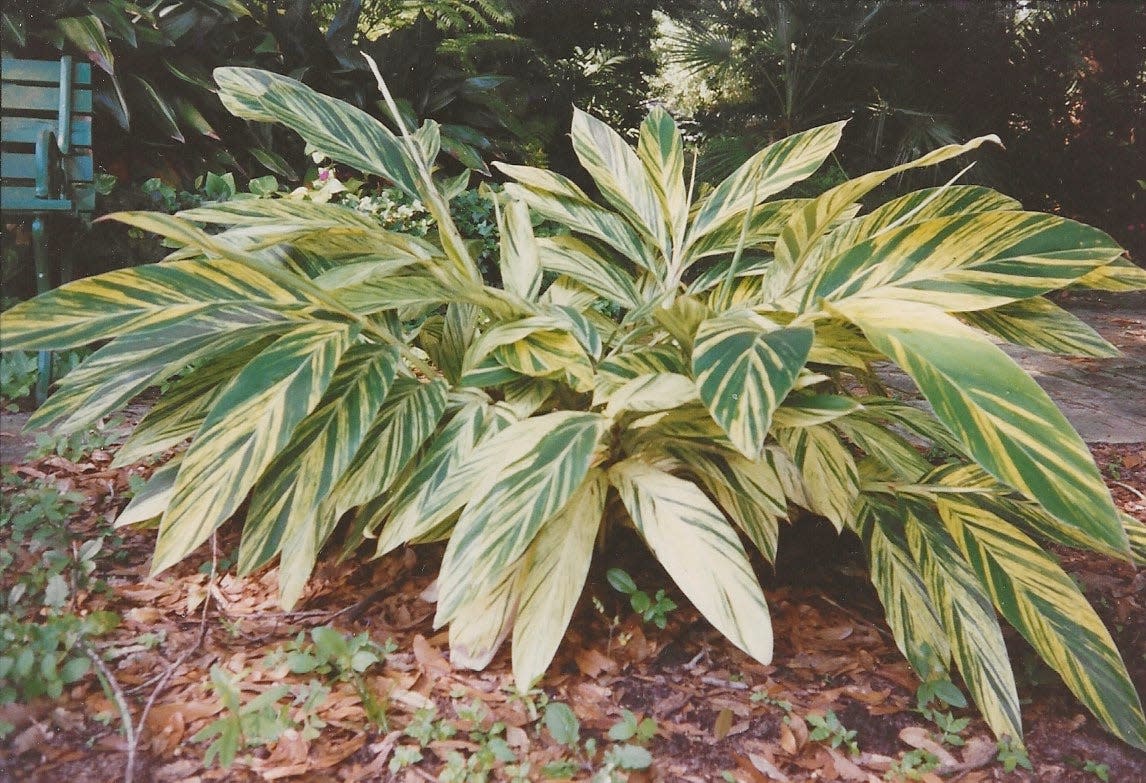CHARLES REYNOLDS: Choose the right plants for screen rooms

Casual gardeners might think almost any shade-tolerant plant would thrive in a screen enclosure. But plants suitable for life under screens require characteristics that disqualify many species.
The most obvious requisite is appropriate size: I’ve seen several pool enclosure roofs punctured by adonidia palms that just kept growing. Clearly they shouldn’t have been used. There are instances, though, where potentially large plants are appropriate. Take podocarpus, for example. They can — over time in landscapes — grow into 50-foot trees. But they’re upright plants that, with two five-minute prunings annually, can be kept any size. Speed of growth in shade, as well as a plant’s ability to rebound after pruning, are also considerations.
And then there’s growth habit, which basically means a plant’s natural shape. If it’s difficult to convince a sprawling plant in the garden to change its ways, doing so in a screened room is doubly daunting. That’s why seemingly ideal choices, including variegated shell ginger, are a no-go, while plants such as devil’s backbone, mother-in-law’s tongue and Japanese boxwood are excellent candidates.
Adonidia palms, as mentioned earlier, are foolish additions to screened enclosures. But that doesn’t mean other palms aren’t superb. Both lady palm and hardy bamboo palm (but not bamboo palm) are upright, clumping species that luxuriate under screening. In addition, those two palms are extremely cold hardy — an important consideration when planting for permanence and ease of maintenance.
Indeed, susceptibility to low temperatures is a limiting factor when selecting plantings. Many lovely kinds, like Persian shield, Brazilian plume and cat’s whiskers, might thrive for years — then die on a particularly cold night. Gardeners, however, must be forgiven for including them, relying on the rationale that screen rooms provide a smidgen of protection during cold snaps.
How about flowers in screen enclosures? The hardy, upright Philippine violet grows 3 to 4 feet tall and displays lavender or white flowers throughout the cool season. Smaller, half-hardy shrubs like flowering maple (Abutilon) and pentas may bloom year-round. Incidentally, some fine tropical-looking plants — including bird-of-paradise — thrive under screening but, sadly, rarely produce their spectacular flowers. Year-round color can be enjoyed by planting the beautifully variegated and remarkably hardy aucuba shrubs.
Spiny plants are unwelcome in many landscapes, and they’re usually not tolerated in screen rooms. That’s a shame because large, upright, fast-growing, spiny succulents like milkstripe euphorbia and ammak euphorbia make striking specimen plants.
Charles Reynolds, a Winter Haven resident, has an associate’s degree in horticulture and is a member of Garden Writers Association of America. He can be reached at ballroom16@ aol.com
This article originally appeared on The Ledger: CLIPPINGS

